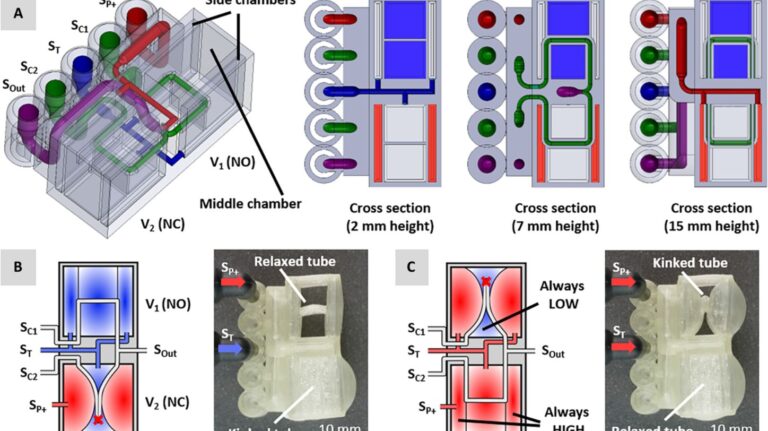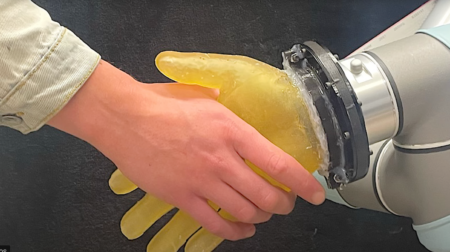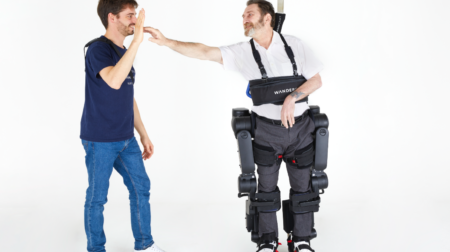A research team at the University of Freiburg has created 3D pneumatic logic modules that use air pressure to control the movements of soft robots.
Using modules, the robots can be controlled without the need for electronics which is currently a limiting factor to the scaling of soft robotics.
Pressure-triggered valves use the pressure level applied to one connector to regulate the volumetric flow between two others.
Arranged in a network, this valve type acts analogously to electric metal-oxide-semiconductor field-effect transistors (MOSFET) to transmit electrical (and potentially digital) signals from the chambers converting them into movement.
In each module two pressurised chambers sit adjacent to a 3D printed canal. The expanding chambers can control the air flow in the channel like a valve by compressing the channel and stopping it.
Each module can direct air flow into the soft robot’s movement components while carrying out Boolean logic operations in a manner akin to electrical circuits by precisely opening and closing the valve. The pressure-triggered valves that mimic the work principle of an electric MOSFET, allowing soft robotic limited movement.
Alternating air flow into individual chambers can dictate the function of each module. The modules can function at pressures ranging from 80 to more than 750 kilopascals (the pressure exerted by a 10-g), depending on the material chosen. They react quickly in contrast to other pneumatic systems around 100ms.
The modules enable the complete production of soft robots that are flexible and devoid of electronics within a 3D printer using standard filament printing material.
University of Freiburg research team leader, Dr. Stefan Conrad, said: “Our design makes it possible for anyone with 3D printing experience to produce such logic modules and use them to control a soft robot without the need for high-end printing equipment, and this marks a significant step towards completely electronics-free pneumatic control circuits that can replace increasingly complex electrical components in soft robots in the future.”









